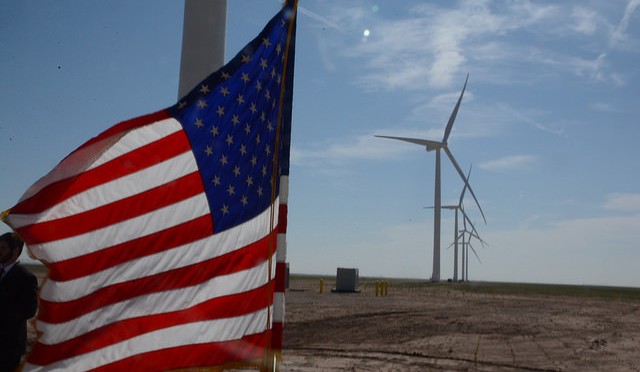On 27 May, the US Internal Revenue Service (IRS) announced it will provide one additional year of safe harbour flexibility for wind power projects that began construction in 2016 and 2017, in order to address the significant short-term challenges for these projects due to COVID-19.
Following the Production Tax Credit (PTC) five-year phase-out schedule and rules, wind turbines projects that started construction in 2016 and 2017 must be commissioned within four years, the ISR Safe Harbour deadline, in order to be eligible to receive 100% and 80% of the PTC at $25/MWh and $20/MWh respectively. If wind farm project developers fail to meet the 2020 and 2021 commission deadlines, they will not be able to claim the regulated PTC value.
According to AWEA’s Q4 2019 market report, 22,115 MW of wind projects are under construction and 22,038 MW are in advanced development as of the end of 2019. GWEC Market Intelligence stated in their Q1 2020 pre-COVID outlook that the onshore wind installation rush would continue in the US in 2020-2021, and up to 15 GW of onshore wind projects are expected to be brought online this year, with another 10 GW to be connected in 2021.
However, as reported in our previous weekly update, the COVID-19 pandemic has disrupted the US wind supply chain, with turbine supplier Siemens Gamesa and component suppliers LM Wind Power and TPI Composites either furloughing employees or temporarily halting production at their US production facilities. In response to such challenges and risks of project delay, on 19 March 2020, the US renewable energy association consortium including AWEA wrote to U.S House of Representatives and Senators calling for the prompt repair and extension of critically important tax incentives to help the clean energy sector surmount the impacts of the COVID-19 pandemic.
Specifically, the consortium emphasized the concerns about supply chain disruptions that have the potential to delay construction timetables and undermine the ability of wind project developers to qualify for time-sensitive tax credits. Therefore, the consortium asked for an extension of start construction and safe harbor deadlines to qualify for renewable tax credits in order to accommodate pandemic-related disruptions. In April, AWEA asked wind industry stakeholders to sign a letter to Congress asking for two legislative changes that are important to mitigate the impacts of COVID-19:
- Provide increased flexibility from 4 to 5 years for the continuity safe harbor of the production tax credit (PTC)/investment tax credit (ITC) for projects beginning construction in 2016 and 2017; and
- Create a 100% direct pay option for any PTC/ITC for projects that commenced construction in 2016 and 2017.
Although the “100% direct pay option” has not yet been provided by the ISR, one additional year of safe harbor flexibility for wind projects is still welcomed by the wind industry, as it is a critical step to allow U.S. onshore wind projects that are already under construction to move forward and achieve their economic and employment potential. Such an extension will allow projects that began construction in 2016 and 2017 to receive 100% and 80% of the PTC even if they do not begin generating power until 2021 and 2022 respectively.
Following this extension, GWEC Market Intelligence believes multi-GW level of onshore wind expected to be built in 2020 and 2021 is likely to be shifted to 2021 and 2022, but the total expected new wind power installations in 2020-2022 will stay the same. The updated annual installation forecast for the US will be avaliable at GWEC Market Intelligence’s Q2 2020 post-COVID Outlook to be released soon.


